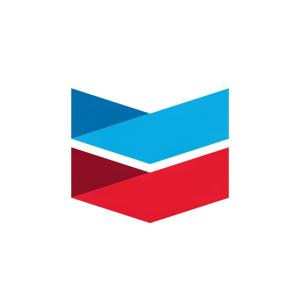Chevron Announces Senior Leadership Changes
The company’s Oil, Products & Gas organization will be consolidated into two segments: Upstream and Downstream, Midstream & Chemicals. Mark Nelson will continue to lead this organization as vice chairman and executive vice president, Oil, Products & Gas.
The Upstream organizational model will drive value through greater standardization across Shale & Tight, Base Assets & Emerging Countries, Offshore, Eurasia and
Clay Neff, currently president, International Exploration and Production, has been named president, Upstream, effective July 1, 2025.
Bruce Niemeyer, currently president, Americas Exploration and Production, has been named president, Shale & Tight, effective July 1, 2025.
The Downstream, Midstream & Chemicals organization will center around key work processes, including Operations, Commercial, Customer and Enterprise Value Chain Optimization.
Andy Walz will continue to lead this organization as president, Downstream, Midstream & Chemicals.
Chevron’s technical center will be organized to drive value in Technology, Projects & Execution.
Ryder Booth, currently vice president, Mid-Continent Business Unit, has been named vice president, Technology, Projects & Execution, effective July 1, 2025. He is replacing Balaji Krishnamurthy, currently vice president, Chevron Technical Center, who has been named president,
“Our new organizational structure and leadership appointments are designed to improve our operational efficiency and position Chevron for sustained growth,” said Mike Wirth, Chevron’s chairman and chief executive officer. “These changes will help enable us to drive innovation and execution and deliver value for our shareholders.”
Chevron is one of the world’s leading integrated energy companies. We believe affordable, reliable and ever-cleaner energy is essential to enabling human progress. Chevron produces crude oil and natural gas; manufactures transportation fuels, lubricants, petrochemicals and additives; and develops technologies that enhance our business and the industry. We aim to grow our oil and gas business, lower the carbon intensity of our operations and grow new businesses in renewable fuels, carbon capture and offsets, hydrogen, power generation for data centers, and emerging technologies. More information about Chevron is available at www.chevron.com.
As used in this news release, the term “Chevron” and such terms as “the company,” “the corporation,” “our,” “we,” “us” and “its” may refer to Chevron Corporation, one or more of its consolidated subsidiaries, or to all of them taken as a whole. All of these terms are used for convenience only and are not intended as a precise description of any of the separate companies, each of which manages its own affairs.
CAUTIONARY STATEMENTS RELEVANT TO FORWARD-LOOKING INFORMATION FOR THE PURPOSE OF “SAFE HARBOR” PROVISIONS OF THE PRIVATE SECURITIES LITIGATION REFORM ACT OF 1995
This news release contains forward-looking statements relating to Chevron’s operations and strategy that are based on management’s current expectations, estimates, and projections about the petroleum, chemicals, and other energy-related industries. Words or phrases such as “anticipates,” “expects,” “intends,” “plans,” “targets,” “advances,” “commits,” “drives,” “aims,” “forecasts,” “projects,” “believes,” “approaches,” “seeks,” “schedules,” “estimates,” “positions,” “pursues,” “progress,” “design,” “enable,” “may,” “can,” “could,” “should,” “will,” “budgets,” “outlook,” “trends,” “guidance,” “focus,” “on track,” “goals,” “objectives,” “strategies,” “opportunities,” “poised,” “potential,” “ambitions,” “aspires” and similar expressions, and variations or negatives of these words, are intended to identify such forward-looking statements, but not all forward-looking statements include such words. These statements are not guarantees of future performance and are subject to numerous risks, uncertainties and other factors, many of which are beyond the company’s control and are difficult to predict. Therefore, actual outcomes and results may differ materially from what is expressed or forecasted in such forward-looking statements. The reader should not place undue reliance on these forward-looking statements, which speak only as of the date of this news release. Unless legally required, Chevron undertakes no obligation to update publicly any forward-looking statements, whether as a result of new information, future events or otherwise. Among the important factors that could cause actual results to differ materially from those in the forward-looking statements are: changing crude oil and natural gas prices and demand for the company’s products, and production curtailments due to market conditions; crude oil production quotas or other actions that might be imposed by the Organization of Petroleum Exporting Countries and other producing countries; technological advancements; changes to government policies in the countries in which the company operates; public health crises, such as pandemics and epidemics, and any related government policies and actions; disruptions in the company’s global supply chain, including supply chain constraints and escalation of the cost of goods and services; changing economic, regulatory and political environments in the various countries in which the company operates; general domestic and international economic, market and political conditions, including the military conflict between
View source version on businesswire.com: https://www.businesswire.com/news/home/20250224202767/en/
Allison Cook – acook@chevron.com
Source: Chevron Corporation







